It is neither realistic nor possible for the network to stay static all the time, since the technology and capability of which advances dramatically throughout the world. In this case, there comes the constant demand for a more secure, more reliable and faster network. Media converters are such an ideal solution that designed for this dynamic networks, which enable network managers to take advantage of speed, bandwidth, and security enhancements by linking dissimilar cabling media, for example, cooper and fiber. In this article, we will concentrate on explaining how to apply media converter to your infrastructure.
Media converters do just what their name implies: They convert data signals on one cabling medium to signals that can be transported over another medium. Therefore, they provide the chance to extend the life of legacy networks with the latest technology, instead of having to tear everything out and start over when new technology becomes available, or even worse-being impeded by an old technology.
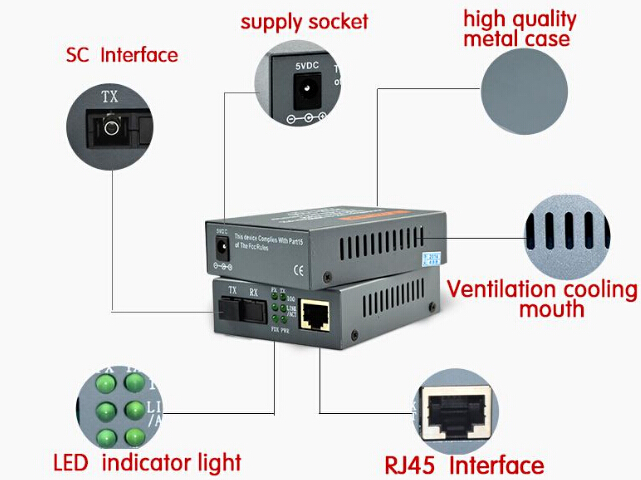
Media converter facilitates the connection of a multitude of devices by supporting connections to and from switches, hubs, routers, and even direct to servers. It hence brings more flexibility to the network.
Media converter boosts the evolution of copper networks to faster, more-secure fiber-optic technology without requiring a full network retrofit. It provides the following benefits:
- Extend network distances by allowing the integration of fiber-optic cable into copper networks to support longer distances.
- Allow add-on devices, making it possible to connect the newest high-end, high-bandwidth switches and hubs, regardless of connector restrictions.
- Maximize efficiency and economy in new networks by enabling a high-bandwidth fiber optic backbone to feed copper or lower-speed fiber to work groups and desktops.
- Increase network flexibility, because media converter can be inserted almost anywhere in the network.
When extending copper UTP Ethernet cabling at distances beyond 100 m (which is maximum for UTP) to fiber optic cabling, a fiber media converter is typically used. Media converters have two types of ports that for copper and fiber respectively. For fiber, there are ports designed for optical transceivers (SFP, XFP, etc.), and for fiber patch cables (SC, LC, etc.). While for copper, ports are all designed for RJ45 copper cables.
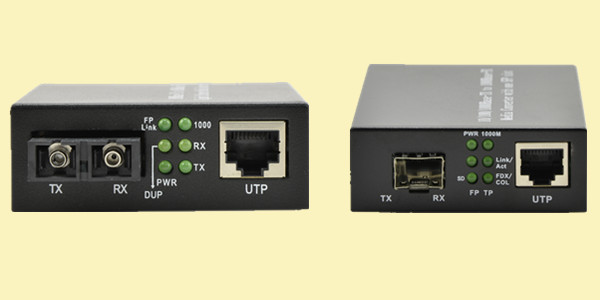
Speaking of employing fiber media converters to the existing network, firstly we’d better know the interfaces of them. The following picture illustrates the commonly used interfaces. Among which the ST, SC, LC, MT-RJ and RJ 45 interfaces of fiber media converters can be connected to target devices directly by patch cords. For SFP, SFP+ and XFP transceivers, things are different. This will be explained in the following.
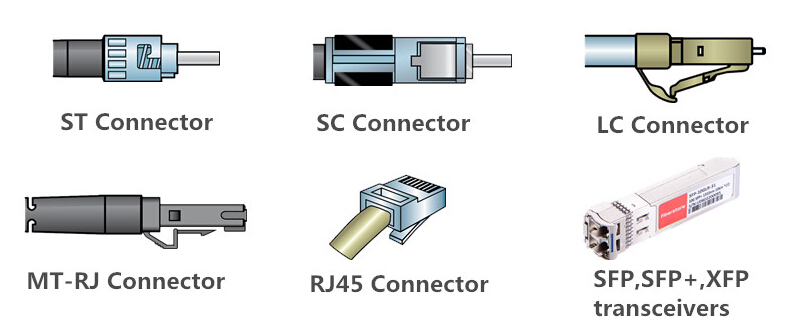
For fiber media converters with LC/ST/SC/MT-RJ interfaces, simply use a fiber patch cable with the corresponding connector type to connect the interfaces of two media converters directly. The RJ45 port of each media converter is connected to 10/100Base-TX HUB and computer server separately. The two fiber media converters should be supported by electricity.
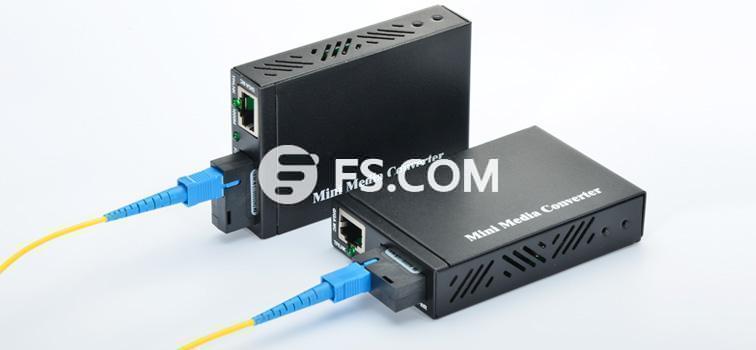
As for fiber media converter with SFP, SFP+ or XFP transceiver interface, the way to connect two media converters is a little bit different. Under this circumstance, two optical transceivers are needed. Additional optical transceiver should be inserted into the port firstly, then the two media converters can be connected via the ports of these two optical transceivers. If the port support 10G and the transmission distance between the two converters is less than 100 meters, then a SFP+ to SFP+ AOC can be used.
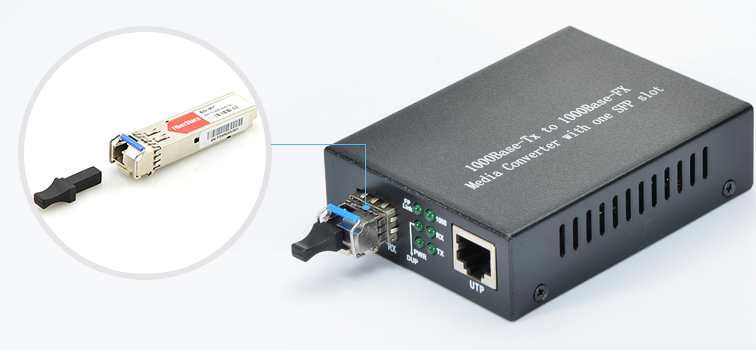
Reminder: In the above illustrations we showed fiber media converters being used in pairs. This is the most vital factor: fiber media converters work in pairs for transmission and conversion.
Media converters are the key to integrating fiber into a copper infrastructure, making it possible to migrate a local network to fiber while extending the productive life of existing infrastructure. In this article, we generally provide connecting method for fiber media converter, as media converters may come in a dizzying array of types, the methods for connecting may depend on the specific condition.




